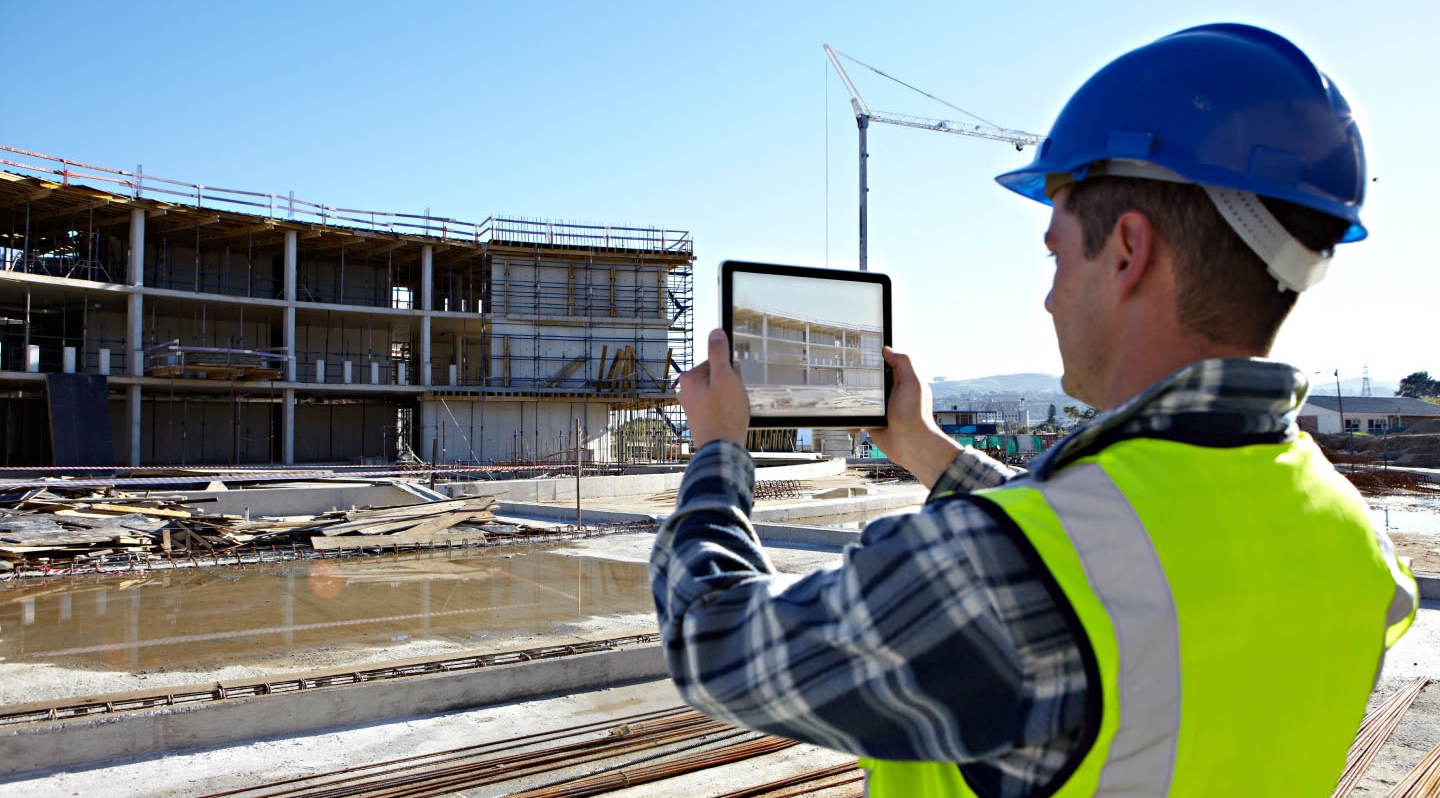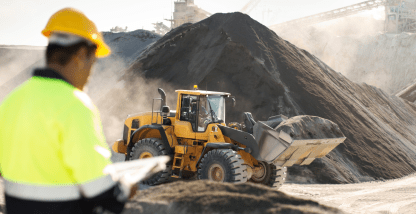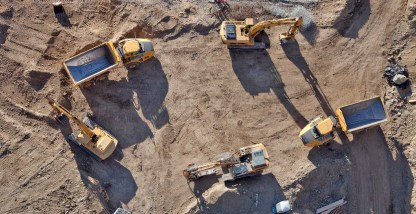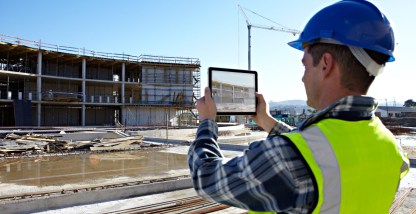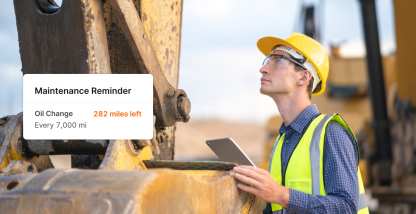Matt Abeles, VP of Construction Technology and Innovation for ABC, talks about ABC’s Safety Technology Guide and the best safety tools for contractors.
For America’s more than 7.5 million construction workers, a culture of safety must be part of the job. Working in construction presents clear safety challenges, from working at height to trenching. Items that construction workers handle on a jobsite are often sharp, heavy, or hot. Today’s construction safety experts aren’t just using gloves and goggles to protect workers. Digital transformation via innovative technologies is helping to improve construction safety in ways we couldn’t have imagined just a few years ago.
The Bureau of Labor Statistics ranks construction third among the country’s most dangerous jobs. Given the construction profession’s risks, safety technology has become vital in construction, even as the industry continues to realize technology’s potential.
“To prevent injuries and fatalities, contractors must approach safety proactively,” says Matt Abeles, Vice President of Construction Technology and Innovation for Associated Builders and Contractors (ABC). “One way to do that, and emphasize safety as a key pillar of company culture, is through technology. Proactive safety measures are exactly what we had in mind in releasing our Safety Technology Guide. Multiple solutions exist to ensure a safer jobsite, and these technologies can be intuitive and cost effective.”
For ABC’s 21,000 members, 97% of which are small to mid-sized contractors, the Safety Technology Guide makes it easier to sift through new safety solutions to find the options that best serve their business. Today’s construction innovations protect workers from overheating, falls, equipment-based injuries, and even road-related accidents.
Advances in automation, artificial intelligence (AI), sensors, data collection, and virtual reality are improving safety and saving lives. Here’s a look at some of the most innovative safety technologies that are driving digital transformation in construction, and how they’re strengthening the safety culture for contractors.
The rise of automation
At one point, automation was a distant dream. Now, construction firms that haven’t automated their processes look like relics. Worse, they’re putting their crews in danger. Automation is reducing the chance of injury on the job. Self-driving machines, for example, are used to haul heavy materials across a jobsite. Drones automatically scan areas for potential hazards. And robots are assigned repetitive tasks, eliminating the chance of fatigue or injury for workers.
“Making the switch to automation isn’t a matter of choice for construction firms, it’s a must,” Abeles says. “As one of the largest industries in the country, construction must be one of the most innovative. Contractors need to build more sustainable processes now or risk falling behind later.”
Now is the time to move into mainstream safety technologies. “Digital forms and apps allow contractors to capture, track and report safety data,” Abeles says. “These tools exist, and they’re game-changers for contractors looking to grow in the face of the skilled labor shortage and demands of inflation.”
Digital solutions for project estimation, scheduling, asset tracking, and project status allow contractors to work faster and smarter. Abeles suggests that contractors automate their most time-consuming processes first, then build from there. “Any digital solution that fits with a firm’s business strategy and long-term plans would be a good buy,” he says.
Artificial intelligence
As more technology providers enter construction, they’re bringing with them AI-based solutions that are modernizing the industry. AI is able to take huge data sets, recognize patterns, and build predictive models that users can rely on to prevent delays and identify important trends. This is a big step for digital transformation in construction.
Motive’s AI Dashcam, for example, captures unsafe driving behaviors on video, then uses AI to alert to the same risky patterns in the future. When a contractor en route to a jobsite follows another vehicle too closely, AI instantly alerts the driver to create space around the vehicle. If a driver gets distracted or reaches for a cell phone, the AI Dashcam alerts the driver to keep their eyes on the road. As Kathleen Walch writes for Forbes, AI capabilities like these can save lives.
“Increasingly, construction sites are being equipped with cameras, IoT devices, and sensors that monitor many aspects of construction operations,” Walch writes in the article AI Transforming the Construction Industry. “AI-enabled systems are able to watch what’s going on 24/7 without distraction. With facial recognition and object recognition technology, AI systems are capable of detecting unsafe behavior and alerting the construction team of potential hazards. Not only does this reduce liability, but it can save lives and increase efficiency.”
Cloud-based software
“The cloud” is a centralized server that contains files that can be accessed online from anywhere. Cloud-based software in construction gives contractors real-time access to information right from the jobsite. Cloud-based software is changing the way contractors work. It allows companies to track the location of equipment, vehicles, and staff. It also enables real-time information sharing.
“Contractors are using cloud-based software to become more productive, profitable, and proactive,” Abeles says. “Purpose-built solutions are helping contractors achieve more from day-to-day, creating more opportunities for them to win work and do it safely.”
Safety apps
The Construction Technology Report from JB Knowledge notes that smartphones, relied upon by 90% of construction workers, are the most-used technology on jobsites. The report also states that 49% of construction workers use mobile apps for safety. Apps are being used to organize safety meetings, report near-misses, increase awareness, and monitor workers’ health. The SafeSite app endorsed by ABC in its Safety Technology Guide helps in performing inspections, reporting incidents, and hosting “toolbox talks” about jobsite safety.
ABC defines toolbox talks as “brief, single-topic training sessions of 15 to 30 minutes held on the jobsite for all employees.” In its recently released Safety Performance Report, ABC says that companies that conduct toolbox talks every day reduce their Total Recordable Incident Rate (TRIR) by 76% and Days Away Restricted or Transferred (DART) rates by 79%. That’s in comparison to firms that hold toolbox talks once per month.
Virtual reality
Virtual reality programs let people walk on the moon and visit far-away places. They also ensure that contractors learn how to build in a safe environment. VR, as virtual reality is often called, simulates dangerous situations and fatal mistakes so that contractors can avoid the same catastrophes in real life.
Crews can use VR simulations to preview potentially risky scenarios and understand how to adjust to them. As a result, teams anywhere can “walk through” a site and examine potential hazards before ever setting foot on a jobsite.
A study from the financial advisory firm PwC shows that virtual reality learners train four times faster than those trained in a classroom setting. Virtual learners also feel four times as focused and more emotionally connected to content than other types of learners. Takeaways from virtual lessons can be applied to actual construction projects, continuously improving safety across a project or an organization.
Smart sensors
A typical construction project has its share of risks. One way to mitigate these risks is to install smart sensors. Known to monitor everything from air quality to body temperature, sensor-laden equipment can be pivotal to saving lives. Smart hard hats, for example, have sensors that monitor vital signs and fatigue levels. Smart boots can track location, movement, fatigue, and falls. Smart watches even make it easier to communicate from the field.
“Increasingly, modern machines and equipment are adding various sensors to help with the overall function and operation of the complicated and expensive machinery,” writes Kathleen Walch in the Forbes article. “These sensors can monitor a variety of different conditions relevant to construction, such as temperature, engine condition, and aspects of application of materials. These tools are able to analyze data in real time and predict with a high degree of certainty problems, delays, or malfunctions that might occur.”
Exoskeleton suits
An exoskeleton suit, often made of metal, enhances contractors’ strength as they move heavy equipment. The suit makes it easier to lift heavy objects and reduces strain on the body. Exoskeleton suits can be full bodysuits or protect specific areas of the body, such as the hands or shoulders. Originally, exoskeleton suits were used to assist in rehabilitation for stroke and spinal cord patients. In construction and manufacturing, they’re used to reduce injury and fatigue and lighten the load.
Drug and alcohol detection
ABC’s Safety Performance Report states that one-third of all safety incidents on construction jobsites involve alcohol or drugs. When firms handle drug and alcohol offenses proactively, safety tends to improve. ABC’s Safety Performance Report, for example, shows that robust substance abuse prevention programs with provisions for drug and alcohol testing make a difference. According to the report, such programs have led to a 70% reduction in TRIR and a 73% reduction in DART rates among contractors.
Proactive solutions like those in the Safety Technology Guide can monitor impairment from fatigue, prescriptions, alcohol, and illicit drugs. In as fast as one minute, drug and alcohol tools can check users’ eyes to detect alterations in pupillary response, providing results instantly.
Get started with construction safety tech today
For firms new to safety technology, the guidance in ABC’s Safety Technology Guide is a great starting point. It shows how to identify, choose, and implement technology to achieve a safer jobsite. Here’s ABC’s step-by-step guidance for contractors planning to invest in digital transformation in construction.
- Start small, testing technology on one or two projects before rolling it out across all jobs.
- Assign a technology champion who is responsible for successfully implementing the technology.
- Understand that technology must be a priority.
- Celebrate small wins and recognize success on any scale when innovating.
- Strategize a rollout to meet end users where they are.
- Identify necessary training for any technology and how that will be completed.
- Create opportunities for employees to connect with one another to strengthen a more inclusive culture, improve safety, and raise efficiency with technology.
High-performing safety technology leads to high-performing fleets. See how the Motive AI Dashcam beats the competition.




